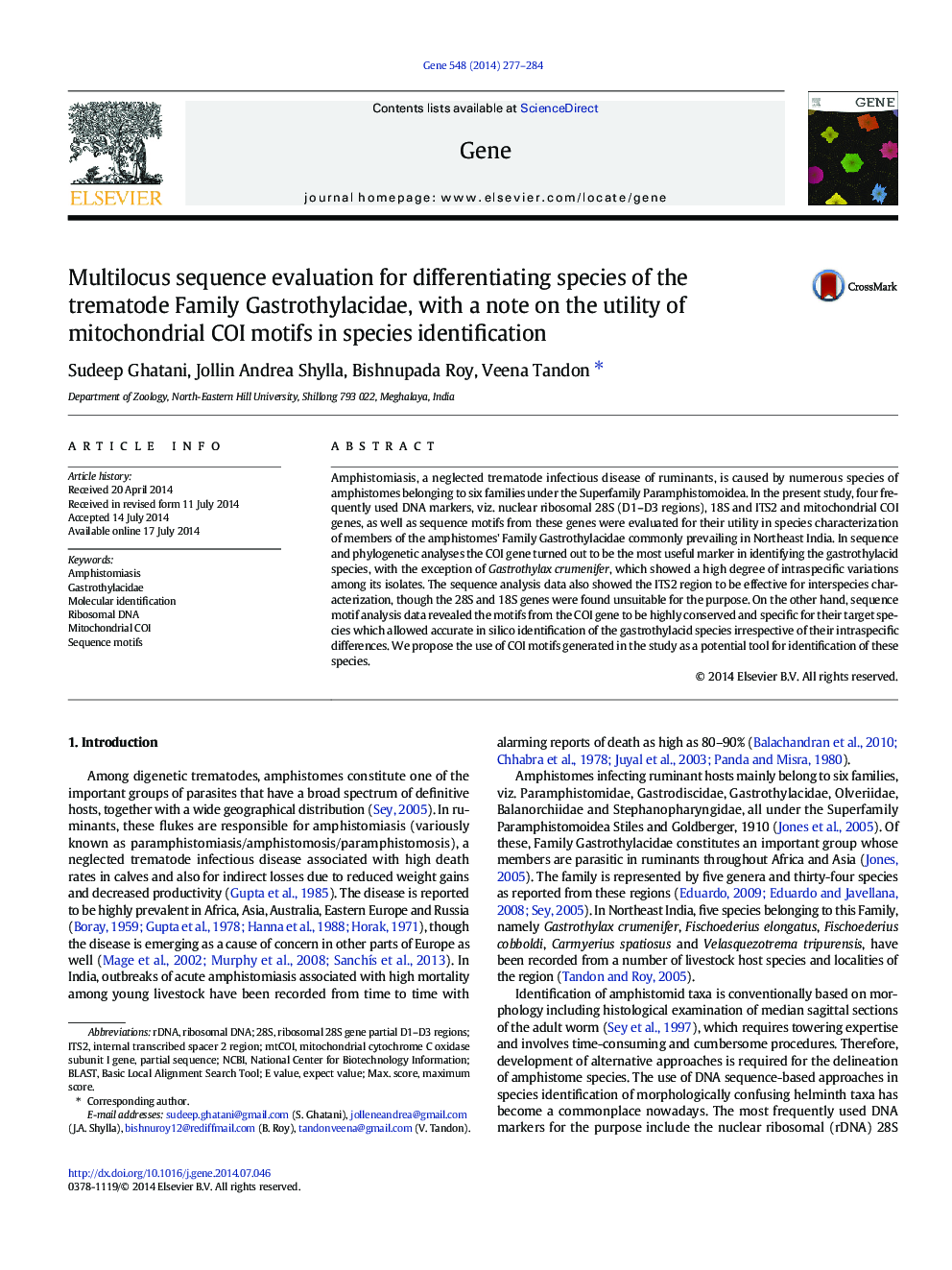| Article ID | Journal | Published Year | Pages | File Type |
|---|---|---|---|---|
| 2816213 | Gene | 2014 | 8 Pages |
•4 genetic markers and motifs assessed for identification of gastrothylacid taxa•Intra- and inter- specific/generic variations revealed overlapping values•COI and ITS2 sequences are useful for species discrimination but with limitations•COI sequence motifs are reliable markers for accurate identification
Amphistomiasis, a neglected trematode infectious disease of ruminants, is caused by numerous species of amphistomes belonging to six families under the Superfamily Paramphistomoidea. In the present study, four frequently used DNA markers, viz. nuclear ribosomal 28S (D1–D3 regions), 18S and ITS2 and mitochondrial COI genes, as well as sequence motifs from these genes were evaluated for their utility in species characterization of members of the amphistomes' Family Gastrothylacidae commonly prevailing in Northeast India. In sequence and phylogenetic analyses the COI gene turned out to be the most useful marker in identifying the gastrothylacid species, with the exception of Gastrothylax crumenifer, which showed a high degree of intraspecific variations among its isolates. The sequence analysis data also showed the ITS2 region to be effective for interspecies characterization, though the 28S and 18S genes were found unsuitable for the purpose. On the other hand, sequence motif analysis data revealed the motifs from the COI gene to be highly conserved and specific for their target species which allowed accurate in silico identification of the gastrothylacid species irrespective of their intraspecific differences. We propose the use of COI motifs generated in the study as a potential tool for identification of these species.
Graphical abstractFigure optionsDownload full-size imageDownload high-quality image (228 K)Download as PowerPoint slide
